第61章
Nowhere are the phenomena of contrast better exhibited, and their laws more open to accurate study, than in connection with the sense of sight.Here both kinds -- simultaneous and successive -- can easily be observed, for they are of constant occurrence.Ordinarily they remain unnoticed, in accordance with the general law of economy which causes us to select for conscious notice only such elements of our object as will serve us for &aeling;sthetic or practical utility, and to neglect the rest; just as we ignore the double images, the mouches volantes , etc., which exist for everyone, but which are not discriminated without careful attention.But by attention we may easily discover the general facts involved in contrast.We find that in general the color and brightness of one object always apparently affect the color and brightness of any other object seen simultaneously with it or immediately after.
In the first place, if we look for a moment at any surface and then turn our eyes elsewhere, the complementary color and opposite degree of brightness to that of the first surface tend to mingle themselves with the color and the brightness of the second.This is successive contrast.It finds its explanation in the fatigue of the organ of sight, causing it to respond to any particular stimulus less and less readily the longer such stimulus continues to act.This is shown clearly in the very marked changes which occur in case of continued fixation of one particular point of any field.The field darkens slowly, becomes more and more indistinct, and finally, if one is practised enough in holding the eye per- fectly steady, slight differences in shade and color may entirely disappear.If we now turn aside the eyes, a negative after-image of the field just fixated at once forms, and mingles its sensations with those which may happen to come from anything else looked at.This influence is distinctly evident only when the first surface has been 'fixated'
without movement of the eyes.It is, however, none the less present at all times, even when the eye wanders from point to point, causing each sensation to be modified more or less by that just previously experienced.
On this account successive contrast is almost sure to be present in cases of simultaneous contract, and to complicate the phenomena.
A visual image is modified not only by other sensations just previously experienced, but also by all those experiences simultaneously with it, and especially by such as proceed from contiguous portions of the retina.This is the phenomenon of simultaneous contrast.In this, as in successive contrast, both brightness and hue are involved.A bright object appears still brighter when its surroundings are darker than itself, and darker when they are brighter than itself.
Two colors side by side are apparently changed by the admixture, with each, of the complement of the other.And lastly, a gray surface near a colored one is tinged with the complement of the latter.
The phenomena of simultaneous contrast in sight are so complicated by other attendant phenomena that it is diffi-
cult to isolate them and observe them in their purity.Yet is evidently of the greatest importance to do so, if one could conduct his investigations accurately.Neglect of this principle has led to many mistakes being made in counting for the facts observed.As we have seen, if the eye is allowed to wander here and there about the field as ordinarily does, successive contrast results and allowance must be made for its presence.It can be avoided only by successfully fixating with the well-rested eye a point of one field, and by then observing the changes which occur in is field when the contrasting field is placed by its side.Such a course will insure pure simultaneous contrast.But even thus it lasts in its purity for a moment only.It reaches its maximum of effect immediately after the introduction of the contrasting field, and then, if the fixation is continued, it begins to weaken rapidly and soon disappears; thus undergoing changes similar to those observed when any field whatever is fixated steadily and the retina becomes fatigued by unchanging stimuli.If one continues still further to fixate the same point, the color and brightness one field tend to spread themselves over and mingle with the color and brightness of the neighboring fields, thus substituting 'simultaneous induction' for simultaneous contrast.
Not only must we recognize and eliminate the effects of successive contrast, of temporal changes due to fixation, and of simultaneous induction, in analysing the phenomena of simultaneous contrast, but we must also take into account various other influences which modify its effects.Under favorable circumstances the contrast-effects are very striking, and did they always occur as strongly they could not fail attract the attention.But they are not always clearly apparent, owing to various disturbing causes which form no exception to the laws of contrast, but which have a modifying effect on its phenomena.When, for instance, the ground observed has many distinguishable features -- a course grain, rough surface, intricate pattern, etc.-- the contrast effect appears weaker.This does not imply that the acts of contrast are absent, but merely that the resulting sensations are overpowered by the many other stronger sen- sations which entirely occupy the attention.On such a ground a faint negative after-image -- undoubtedly due to retinal modifications -- may become invisible; and even weak objective differences in color may become imperceptible.For example, a faint spot or grease-stain on woollen cloth, easily seen at a distance, when the fibres are not distinguishable, disappears when closer examination reveals the intricate nature of the surface.